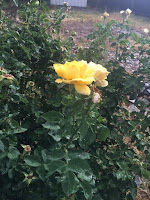Part A
 |
| Around 40 JTU |
 |
| Dissolved Oxygen (4ppm) |
 |
| Nitrate (5ppm) |
 |
| pH (7) |
 |
| phosphate (2ppm) |
 |
| Coliform (Neg) |
 |
| Coliform (Pos) |
 |
Temp (26 degrees)
Dissolved Oxygen - 49 - (poor)
Nitrate - 5ppm - (fair)
phosphate - 2ppm - (good)
pH - 7 - (excellent)
turbidity - 40 JTU - (good)
Temp - 3.3 - (good)
The poor results that I had in my field-testing were found
in the dissolved oxygen levels. If the water had poor oxygen levels are found
in the water then it cannot support large animal life. This was the only poor
results that I got from this water; all the other results were ok.
The excellent readings that I got from the water samples
were from the ph levels. When ph levels are to high younger fish and other
animals can’t live within that water so ph levels must be normal or close to
it.
|
Part B
The article that I read was about the total renewable fresh
water supply. The reason I choose to read about the total renewable water
supply is because you here a lot about how the earth is running out of fresh
water and it’s not that I don’t believe all the talk about that I am just
wondering how much each country has and at what rate it is being depleted. I wonder if there is any part of the data
that shows that we are running out of fresh water is fabricated in anyway.
It seems
that of all the countries South America has the most renewable water on the planet
as a whole. I wonder if the amount of renewable fresh water in South America because
of the amount of rain forests there. Russia has a new amount of fresh water as
well probably because of the amount of ice there. The US had a relative good
amount of fresh water as well. I’m not saying that this data would suggest that
the idea that fresh water depletion should be a serious concern but I’m not
seeing data that would cause me to have concerns unless I’m reading the data
incorrectly.
















